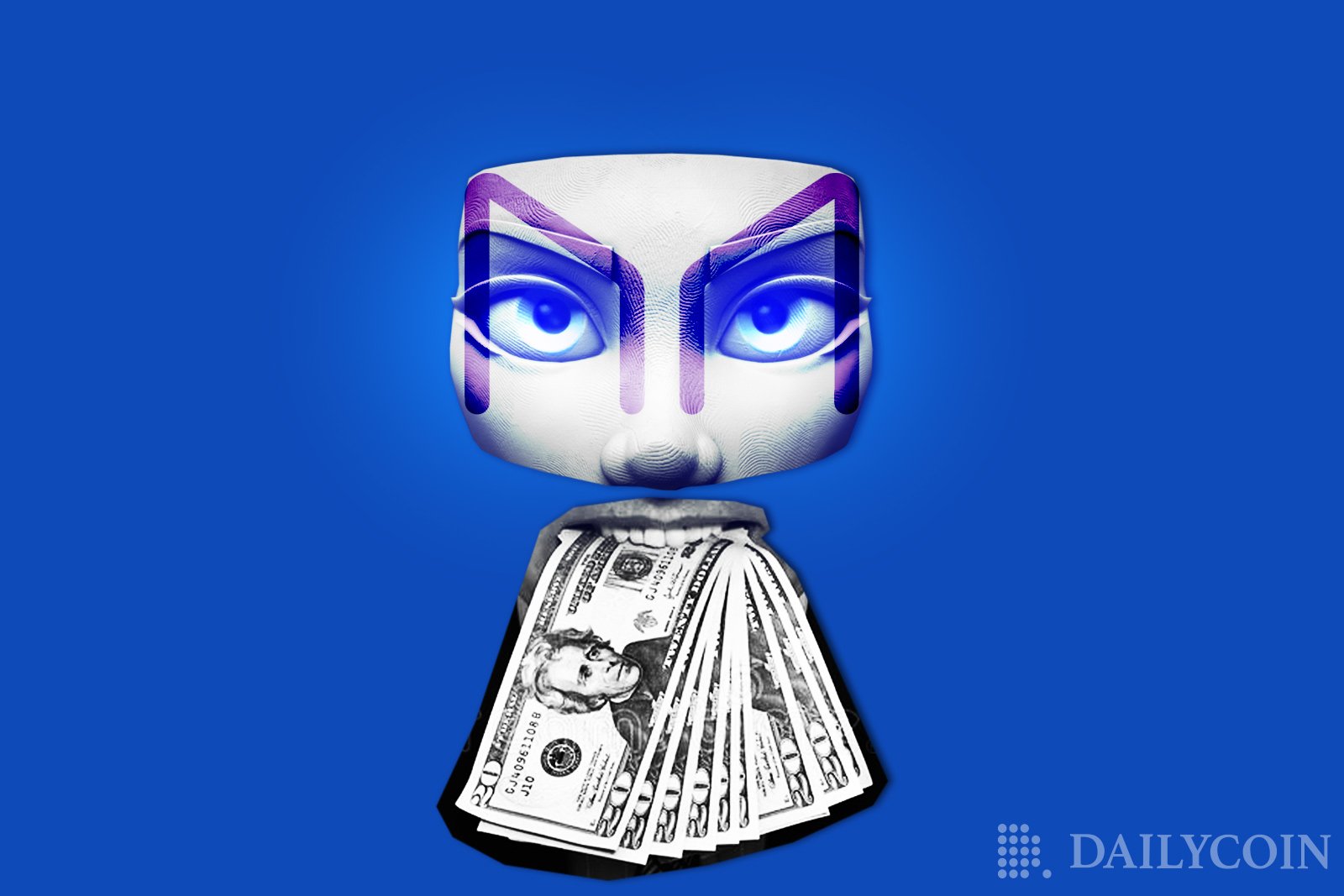
- MakerDAO is mulling a proposal to allocate a significant percentage of DAI’s supply to a newly created USDe pool.
- The proposal has sparked backlash from several crypto community members.
- USDe’s novel mechanism and high yield have drawn Terra comparisons.
In DeFi, yield is the name of the game.
With yields reaching over 67% at one point, USDe, a “synthetic dollar” offering from Ethena Labs, a firm dedicated to creating a widely adopted would-be stablecoin backed by ETH, is the latest to whet the appetite of high-risk crypto natives. This interest has caught the eye of major investors and industry players, including MakerDAO, the body governing DAI, the largest decentralized dollar stablecoin.
On Friday, March 29, Spark a Maker SubDAO injected $100 million in DAI liquidity in Morpho Blue, a decentralized lending protocol to allow users to borrow USDe and its staked derivative sUSDe against DAI. In the face of high demand, MakerDAO is now considering expanding its USDe and sUSDe allocation with up to $1 billion worth of DAI. The planned move, however, is attracting significant backlash from some crypto community members.
MakerDAO Feeling USDe FOMO?
In a Monday, April 1, proposal on the MakerDAO Forum, BA Labs, a DeFi-facing risk assessment firm and key MakerDAO stakeholder, argued that MakerDAO should scale up its USDe allocation by up to $1 billion or about 20% of the current DAI supply, starting with a $600 million infusion, amid strong demand for the USDe pool on Morpho Blue.
Sponsored
The proposal, however, has rubbed several crypto community members the wrong way. Reacting to the news, Aave-Chan Initiative Founder Marc Zeller bashed the proposed move to allocate $1 billion in DAI to the newly launched product as “reckless.” Furthermore, Zeller has launched a proposal to remove the option for users to collateralize loans in DAI on Aave, citing fears of a contagion risk.
Avara VP Emilio Frangella mused that MakerDAO risked triggering a “DeFi black swan event” through poor risk management.
Similarly, prominent crypto community member “PaperImperium” asserted that the proposal made them “really uncomfortable.” They added, “This is a breakdown of process & diligence.”
Sponsored
It is necessary to understand how USDe works to understand these reactions.
How USDe Works: A Looming Black Swan Risk?
Ethereum backs Ethena’s USDe. While stablecoins backed by crypto assets are typically overcollateralized to hedge against market volatility, Ethena’s synthetic dollar offering employs a different approach that allows users to mint 1 USDe for $1 worth of ETH.
Ethena’s approach to offset volatility involves opening short futures positions corresponding to USDe user deposits on centralized exchanges. Through this mechanism, Ethena also generates yield, which it shares with users who agree to lock up their tokens. At the time of writing, this annualized yield is at a mouth-watering 35.4%.
Unsurprisingly, USDe’s unconventional model and significantly high yield have set off alarm bells and drawn Terra UST comparisons. The latter’s collapse erased at least $80 billion in value from the crypto market and is widely seen as the catalyst for the last bear market cycle.
Despite the comparisons, UST and USDe are quite different. Unlike USDe, UST lacked an asset backing and maintained its peg through an algorithmic mint and burn mechanism with LUNA, its sister token.
Still, analysts like “Duo Nine” warn that USDe’s model is unlikely to hold up in a bear market where yields turn negative. Other risks that have been highlighted include counterparty risk, as centralized exchanges used as trading venues by Ethena could collapse.
These risks are part of why Ethena no longer markets USDe as a stablecoin but as a synthetic dollar.
What Could Happen to DAI if USDe Depegs?
Despite the Ethena concerns, Duo Nine has suggested that DAI would be just fine should USDe depeg. This view comes as MakerDAO disclosed in its risk assessment that it could manually liquidate positions and “pull out all available DAI liquidity for pools.”
"That means, they will be the first to sell USDe and recoup their money should USDe depeg," the analyst wrote.
While Duo Nine believes DAI itself would be fine in the case of a USDe depeg, he could not express the same view for participants in the DAI-USDe pool on Morpho Blue, suggesting that the same mechanism ensuring DAI’s safety would ultimately be their undoing.
"They quickly get liquidated. Maker gets their money out first as USDe peg falls."
Still, Duo Nine maintained that Ethena would pose a systemic threat to the broader crypto market should it continue to grow at its current pace, representing a significant percentage of all futures trades in BTC and ETH.
On the Flipside
- Despite the concerns, USDe will likely continue growing due to its high yield. At the time of writing, the synthetic dollar boasts a market capitalization of about $1.7 billion.
- Beyond the promise of high yields, crypto community members also interact with the Ethena protocol to accumulate points to claim airdrops of the protocol’s planned governance token ENA. The firm recently initiated claims for 5% of the total token supply.
Why This Matters
DAI is the largest decentralized stablecoin. MakerDAO’s plans to gain more exposure to the newly launched USDe could have significant implications for DAI and the broader crypto ecosystem.
Read this for more on Ethena:
Ethena Labs Opens 750M ENA Airdrop Claims as Token Goes Live
Learn about Vitalik Buterin’s thoughts on Layer 3 solutions:
Vitalik Buterin Dispels Layer 3 Hype: ‘Not a Magic Scaling Fix’

